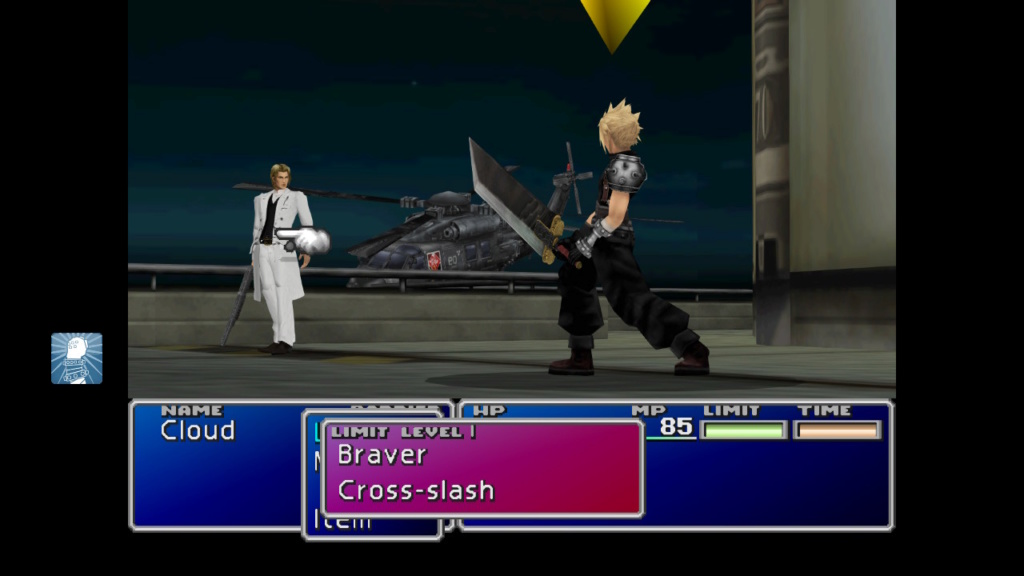
If the player chooses this option, however, the main character's attack power may suffer temporarily as a penalty. If all character life bars reach zero, the game is over, but the player is given the option of continuing and restarting the battle. Some animals attack by physically crushing the players.Ĭharacter health is represented by an incremental life bar, although the player may choose to have it displayed in numerical fractions as in most role-playing games. Enemy sprites are always far larger than player sprites in battle, despite appearing further away from the game camera. The game's battle system relies on conditional turn-based combat, where the characters and enemies cycle through rounds in battling each other, with the first action of the turn awarded to the fastest character. If players choose to battle, they are presented with a submenu of four more options: physically attack the enemy, cast a spell, use a curative item (such as a Cure potion), or defend. Running from battle transports the player back to the field screen, while choosing "control" toggles between the ally's battle mode, where the player can manually control the main character's ally or opt for a computer-controlled ally. Once engaged in battle, the player is thrust into the battle screen, which presents a window-based menu with three commands to choose from: battle, run, or control. Instead, battles are represented in dungeons as stationary enemy sprites, and the player is given the option of approaching the enemy and engaging a battle. Battle system īenjamin and Tristam facing enemies on the battle screenįinal Fantasy Mystic Quest eliminates the system of random enemy encounters, a trademark of the main series. Final Fantasy Mystic Quest does away with save points players can save their progress at any time during exploration. In the Falls Basin, for example, players must move pillars of ice across the ground level in such a fashion that they can be used as platforms to jump across on the second level. The game has more puzzles than earlier Final Fantasy games. Players can chop down trees with an axe, detonate bombs to open sealed doorways, or use a grappling hook to clear wide gaps.

The game is characterized by featuring action-adventure game elements besides jumping, players can use weapons outside of battle, which play an active role in exploration.

Once its path is open, the player can enter an icon the game's plot and action takes place within these icons, which include towns, dungeons, and battlefields. Some routes are blocked off (restriction is indicated by a gray arrow), but become accessible when the player succeeds in a specific task, such as completing a dungeon. Instead, they travel along set paths from one "icon" (pictorial image on the world map) to the next. Unlike past Final Fantasy games, players cannot freely roam the world map. The game features a unique way of traveling the world map. Like previous games in the series, Final Fantasy Mystic Quest is presented in a top-down perspective, with players directly navigating the main character around the world to interact with objects and people. Over time, the game has kept the reputation for being a "beginner's Final Fantasy" and has been praised for its music. The game received middling reviews and sales in North America and Japan, citing its simplified gameplay and lack of depth in the game's story.
#FINAL FANTASY 7 MOD PATHING MANUAL#
Many series staples are eliminated, such as random battles, save points, manual equipment, and the party system. The gameplay takes a departure from the main series in a variety of ways. His goal is to reclaim a set of stolen crystals that determine the state of the world's four elemental powers. In the game, the player controls a youth named Benjamin in his quest to save the world. Final Fantasy Mystic Quest was the first Final Fantasy game to be released in Europe. The game's presentation and battle system is broadly similar to that of the main series, but it differs in its inclusion of action-adventure game elements. designed for the entry-level player" in an attempt to broaden the genre's appeal. Final Fantasy Mystic Quest was first released in North America in 1992 and marketed as a "simplified role-playing game. The game was released as a spin-off to Square's Final Fantasy series of video games.

Final Fantasy Mystic Quest, released as Mystic Quest Legend in PAL regions and as Final Fantasy USA: Mystic Quest ( ファイナルファンタジーUSA ミスティッククエスト, Fainaru Fantajī USA Misutikku Kuesuto) in Japan, is a role-playing video game for the Super Nintendo Entertainment System.


 0 kommentar(er)
0 kommentar(er)
